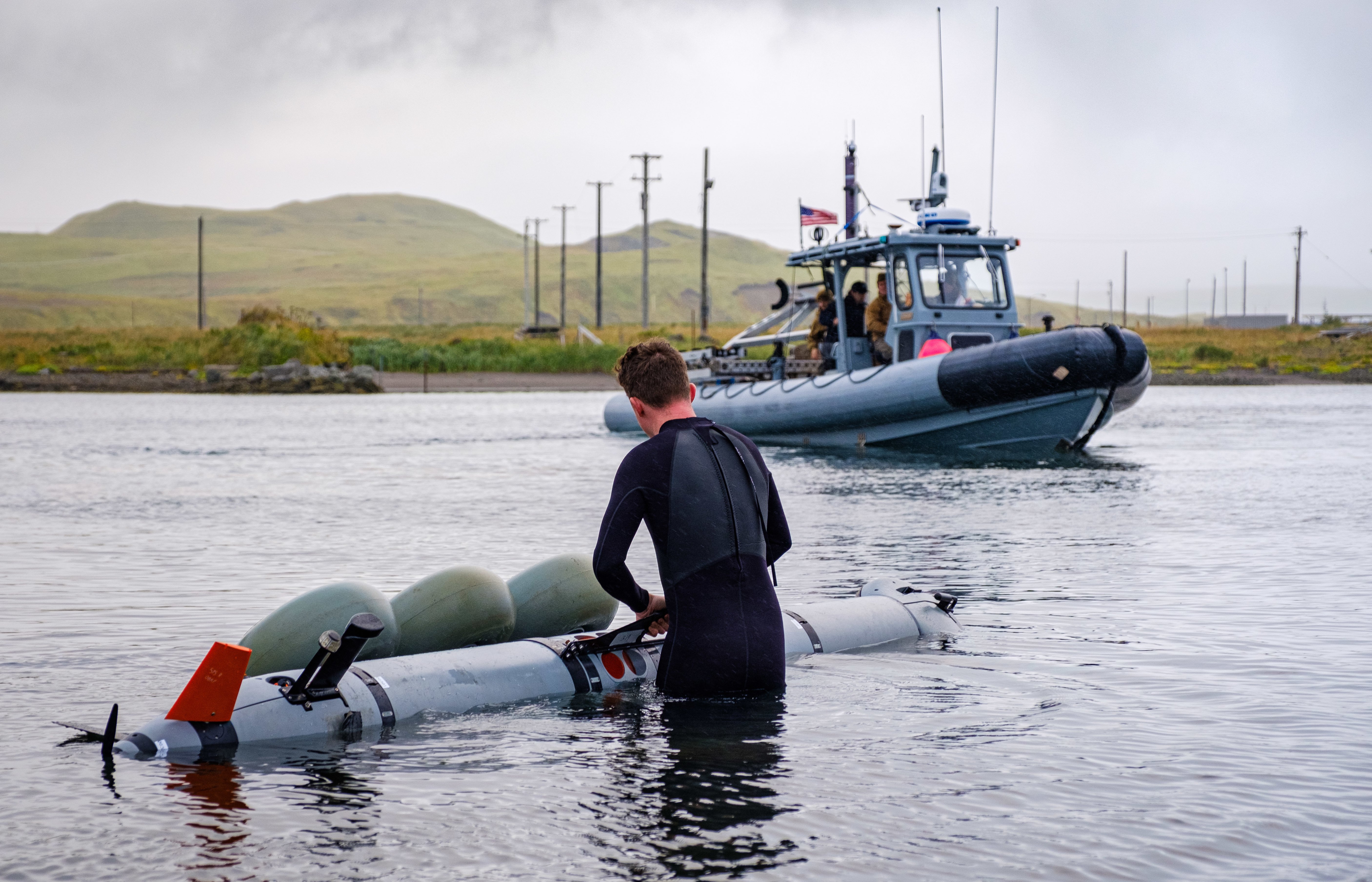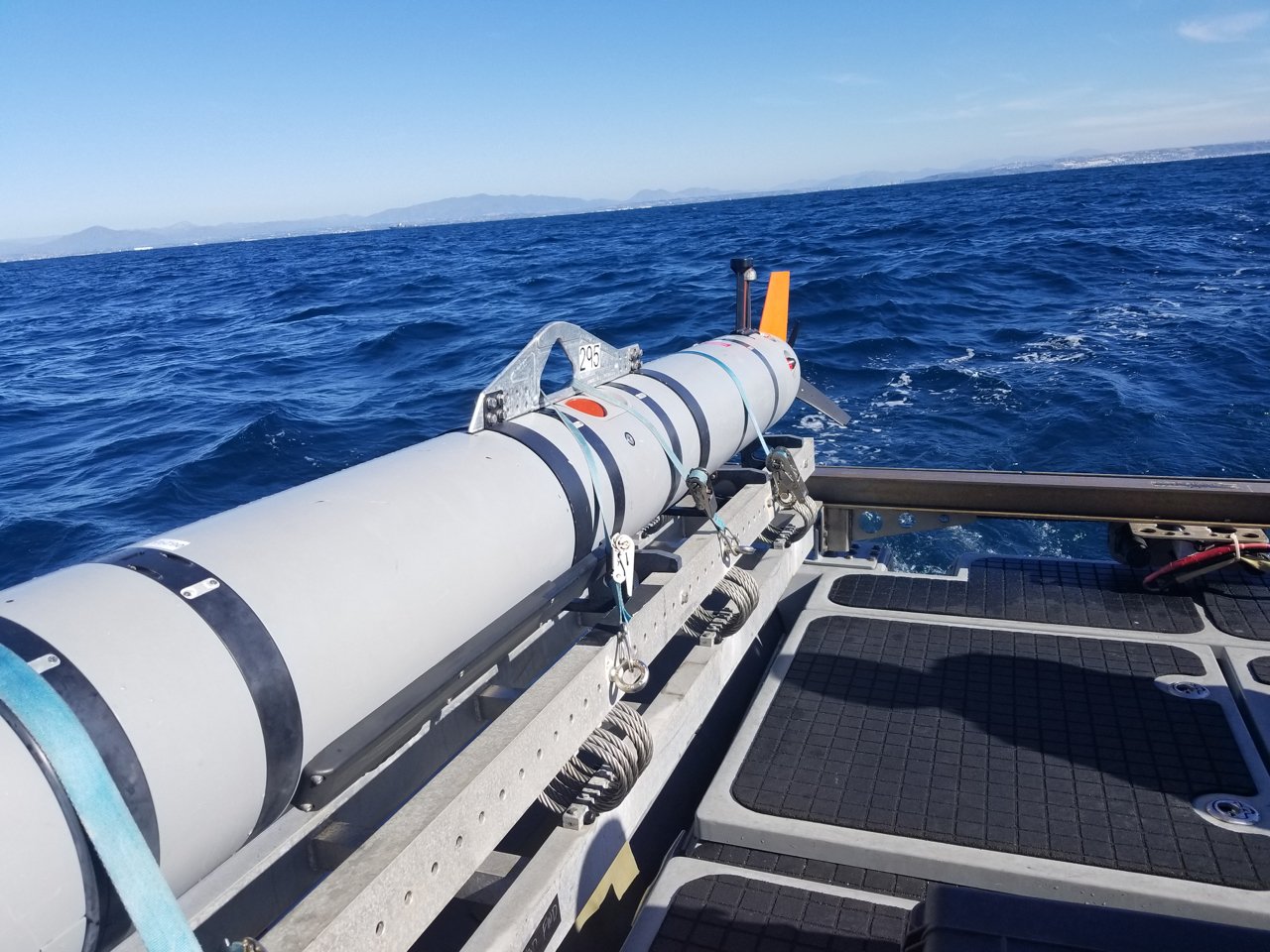
The Navy plans to deploy the early models of its Razorback medium-sized unmanned underwater “as soon as we can” even as the service is in the midst of procuring an upgraded model.
The first version of the Razorback UUV was meant to be deployed and recovered from a submarine’s dry deck shelter, carrying with it environment-sensing payloads that could help submarines have eyes in more places underwater.
Those UUVs are delivering now, even as the Navy has already put out a request for proposals for the next iteration of the UUV that would be launched and recovered from a torpedo tube – meaning divers wouldn’t have to go out into the water to help get the unmanned craft started on a mission or bring it back into the sub afterwards.
Capt. Pete Small, unmanned maritime systems program manager (PMS 406) within the Program Executive Office for Unmanned and Small Combatants, said last week at a virtual conference hosted by the American Society of Naval Engineers that the Navy would take delivery of nine dry deck shelter versions of the vehicle – two of which are already being used for testing at the Unmanned Underwater Vehicle Squadron (UUVRON) and seven of which are still pending delivery.
The vehicles at the UUVRON are “really more training assets and initial vehicles, but we will take seven more and we do intend to deploy those on missions as soon as we can. And there’s a number of things in the fire working to make that happen,” Small said in response to a question from USNI News during a panel presentation.
“So that is the intent to do that, and we do intend to, again, further develop that capability to get the divers out of the loop with later vehicles.”

The next iteration of the Razorback will achieve two things: it will simplify the process for submarine crews to launch and recover the vehicles on their own without putting divers in the water, and it will mark the beginning of a common medium UUV program that will support both the submarine community and the explosive ordnance disposal community.
Within the EOD community, expeditionary mine countermeasures companies’ unmanned systems platoons operate a Mk 18 Mod 2 Kingfish UUV to comb the ocean floor for mines or other obstacles, or to reacquire a previously found mine for further examination. These UUVs operate different sensors than the Razorback, but the Navy ultimately decided to field a common MUUV body that could carry different sensor packages for each community. In the case of the ExMCM companies, the UUV is launched and recovered from a pier or from a rigid-hull inflatable boat in the water.
The Navy is similarly executing an acquisition strategy for its large UUV that incrementally increases capability. A Phase 1 design of its Snakehead Large Displacement UUV, which has been described as a government-led prototyping effort, will deliver this fiscal year and begin in-water testing. The Phase 2 LDUUV would be “larger, more capable and help us to complete the submarine integration and develop a capable large displacement UUV for deep, long-endurance and large-payload operations in the undersea,” Small said during the panel discussion.
He told USNI News during the question-and-answer session that that first vessel would likely be too busy doing risk-reduction testing to be used operationally, though he didn’t rule out that possibility completely.
“We have a lot of testing planned for that. Certainly, if the opportunity arose where we were past that risk-reduction testing and had an opportunity to deploy it, then we would always evaluate that, but we feel that with that one vehicle we’ll be fully engaged in testing and risk-reduction in support of Phase 2 for the foreseeable future,” he said.
In the extra-large UUV portfolio, Small said five Orca XLUUVs are in fabrication and would deliver and begin in-water testing in the coming years.





